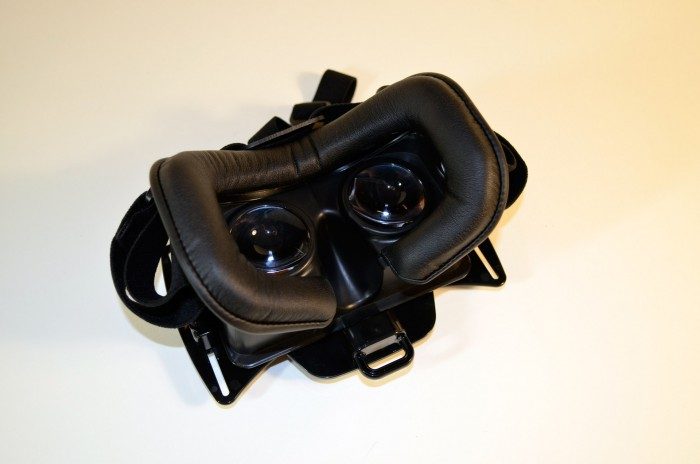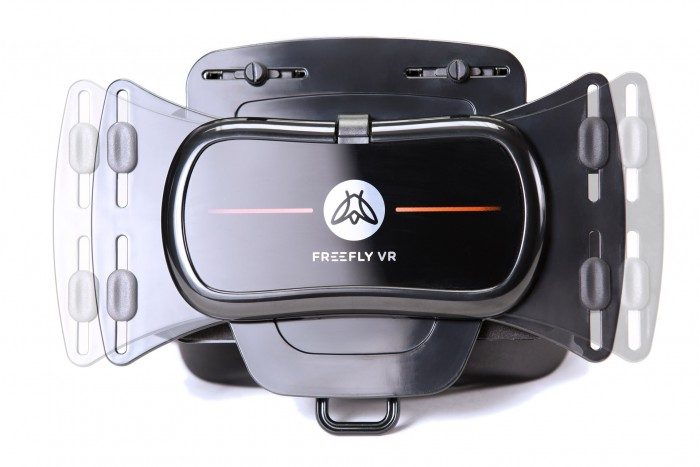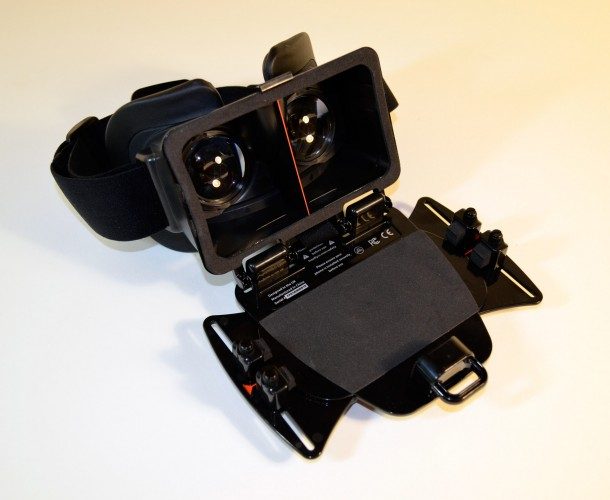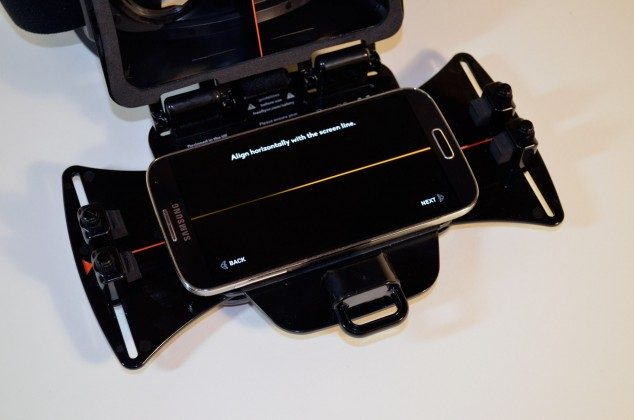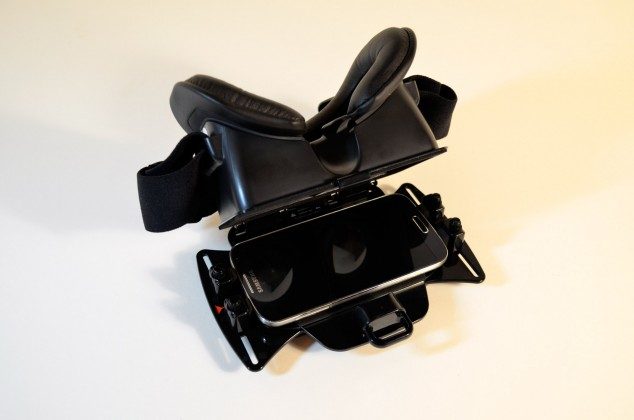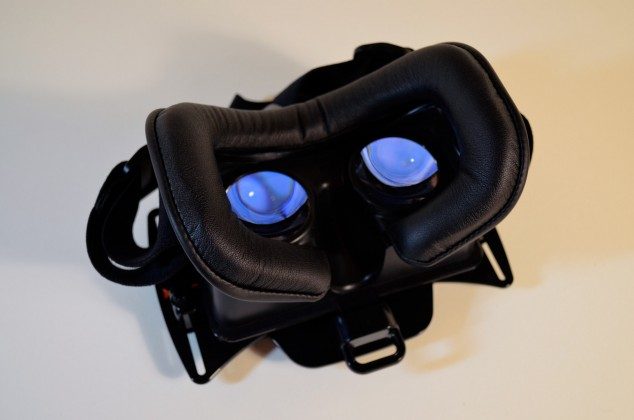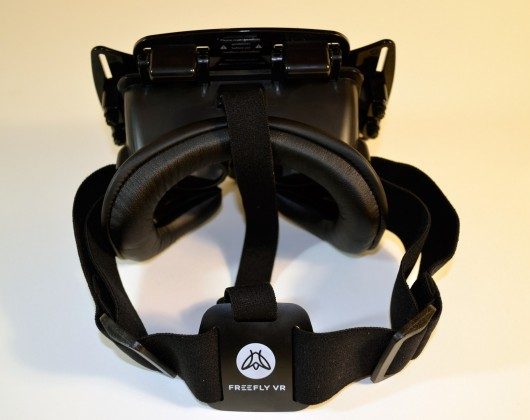Freefly VR launches today, a VR smartphone adapter with a unique universal design for phones from 4.7 to 6.1-inches. Road to VR readers can take an exclusive 18% discount off a purchase of the headset.
The Freefly VR smartphone adapter uses an iOS or Android smartphone from 4.7 to 6.1-inches for use as a mobile VR headset with whatever apps are available from the app stores. The headset can fit a wide range of popular devices like the iPhone 6 (4.7-inches) and Galaxy S6 (5.1-inches) to the iPhone 6+ (5.5-inches) and Galaxy Note 4 (5.7-inches)
18% Discount for Road to VR Readers
As part of the launch, Road to VR readers can take an exclusive 18% discount off the £67 list price of the headset which is made available for purchase starting today in Europe and the UK, with pre-orders available in the US and Canada. Use the code RTVR1000 in the cart after selecting the headset to apply your 18% discount, bringing the device down to £54.94. The discount applies to both purchases and pre-orders. Included in all purchases is a handy hard-shell carrying case.
Though joining a growing number of VR smartphone adapters, Freefly VR has been in development for 18 months and is launched by Proteus VR Labs which was co-founded by London VR Meetup host Jon Tustain.
Those 18 months show through to the finished product which has a unique design that adapts smartly to devices of different sizes and shapes, orienting each for proper viewing through the large high quality lenses.
A button on the front of the headset causes the spring-loaded ‘dual wings’ to extend to their maximum width. From here you rest the unit face down and use the hook on the bottom to unhinge the face from the body, revealing the area that will receive your phone.
This design is actually quite elegant as your phone is always flat during the fitting and setup process, rather than being upright, making it easy to adjust for ideal alignment with the lenses.
At this point you can push the spring loaded wings inward to begin to tighten them around the phone. The wings are smartly mechanically linked such that they both tighten at the same rate, essentially automatically centering the phone.
For most phones that’s all that’s needed, but what if your phone’s display happens to not be centered within its body? The Freefly VR folks thought of that too—loosening two finger-screws on the front of the headset allows you to move the phone holster portion left or right to properly align the center of the phone display with the center point between the two lenses. Ensuring this alignment is done correctly is very important to a comfortable viewing experience, as any misalignment here could mean some of the right stereo image appearing in the left eye’s view or vice versa, leading to uncomfortable cross-talk.
Once you’ve got the horizontal adjustment made for your phone, you can tighten the finger-screws in place and you won’t need to touch it again unless you switch phones. The Freefly VR app on Android walks you through fine adjustments by drawing a horizontal and vertical line across the phone which is helpful for lining up with the corresponding lines on the headset. Once you’re happy with the alignment, the app will also help you adjust your phone to a comfortable volume and pick from a number of curated VR apps (which the company plans to add to over time) before closing it up and strapping it on.
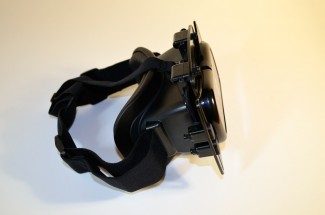 The headset is suitably light (though this will of course vary based on your phone) and uses a familiar headstrap approach which has one strap going around the back of the head and another over the top. The faux-leather padding is comfortable against the face, though it comes a bit nearer to the eyes than I’m used to on other VR headsets. The padding provides a complete seal against incoming light. The nose cutout is deeper but perhaps slightly thinner than on some other popular headsets. My nose was perfectly happy, but if you’ve got a wider than usual nose you can breathe easy knowing that Freefly is offered with a 30 day money back guarantee.
The headset is suitably light (though this will of course vary based on your phone) and uses a familiar headstrap approach which has one strap going around the back of the head and another over the top. The faux-leather padding is comfortable against the face, though it comes a bit nearer to the eyes than I’m used to on other VR headsets. The padding provides a complete seal against incoming light. The nose cutout is deeper but perhaps slightly thinner than on some other popular headsets. My nose was perfectly happy, but if you’ve got a wider than usual nose you can breathe easy knowing that Freefly is offered with a 30 day money back guarantee.
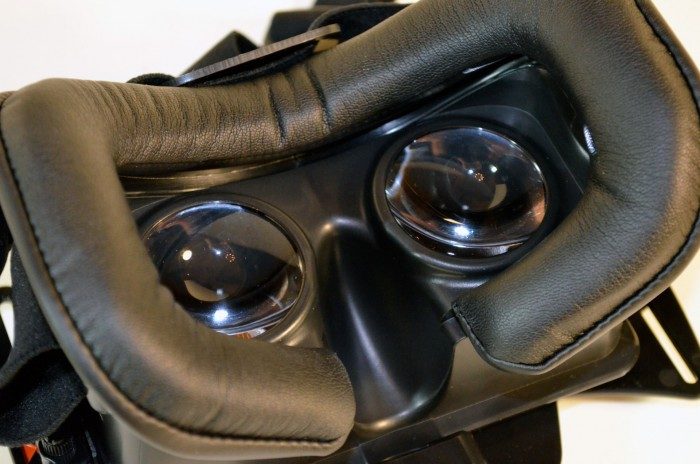 While Freefly VR is a comfortable and smartly designed VR smartphone adapter, it is by no means immune to issues which plague all VR smartphone adapters—namely input and headtracking performance.
While Freefly VR is a comfortable and smartly designed VR smartphone adapter, it is by no means immune to issues which plague all VR smartphone adapters—namely input and headtracking performance.
Input is still evolving in the VR smartphone adapter space. Google’s Cardboard uses an inventive magnetic ring on the side of the adapter which can be sensed as a single button press, but other adapters have not caught on, possibly in part because use of the magnetic ring means the phone’s magnetometer can’t be used for drift correction (an issue which causes your forward direction to change slowly over time).
Freefly doesn’t use the magnetic ring for input so you’ll be restricted to experiences that have been developed with only headtracking input in mind (like Proton Pulse) unless you’ve got a Bluetooth controller to connect. The company plans to offer their own controller eventually.
Headtracking performance will vary per phone, but it still doesn’t come close to what’s been seen on desktop-class VR experiences. Google is continuing to enhance their Cardboard SDK with drift correction and other improvements to benefit headtracking across apps, but it will be some time before we see smartphones with high quality sensors that are better for VR headtracking than what’s in phones today.
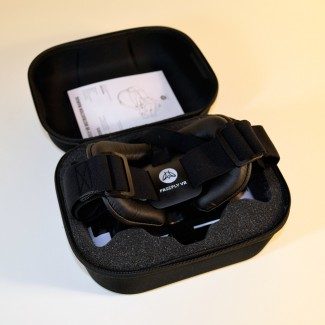 Aside from a low cost entry point, another benefit to the VR smartphone adapter approach is that the latest phones have surprisingly great screens which look great through Freefly’s high quality lenses. Even using the Galaxy S4, which launched in 2013, provided an impressive experience when viewing 360 photos.
Aside from a low cost entry point, another benefit to the VR smartphone adapter approach is that the latest phones have surprisingly great screens which look great through Freefly’s high quality lenses. Even using the Galaxy S4, which launched in 2013, provided an impressive experience when viewing 360 photos.
All in all, the Freefly VR headset feels like a well built and smartly designed bit of kit. This is one to be considered, so long as you can look past the input and headtracking issues that are present in all VR smartphone adapters.
Disclosure: Jon Tustain contributes articles to Road to VR. Proteus VR Labs has an affiliate agreement with Road to VR.

